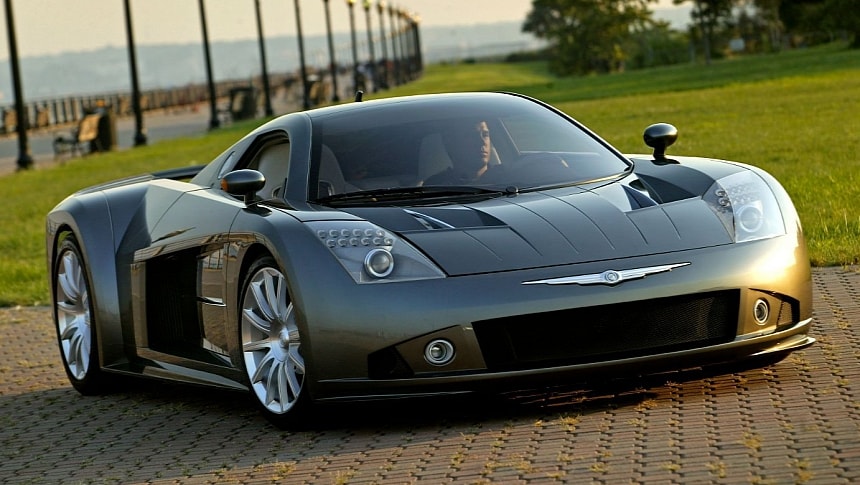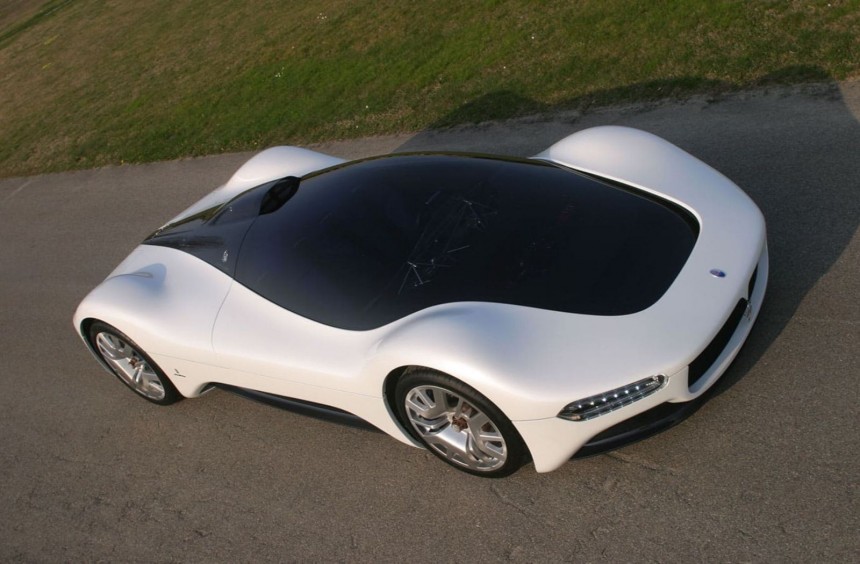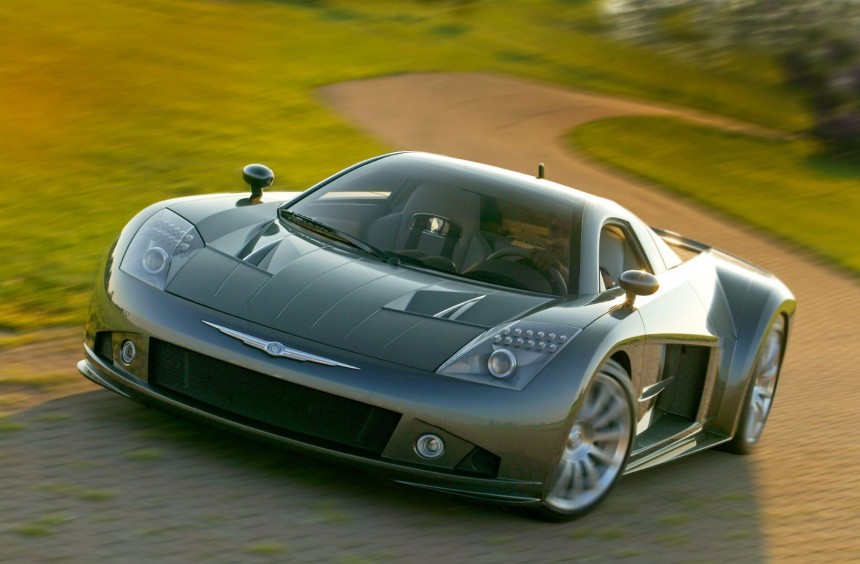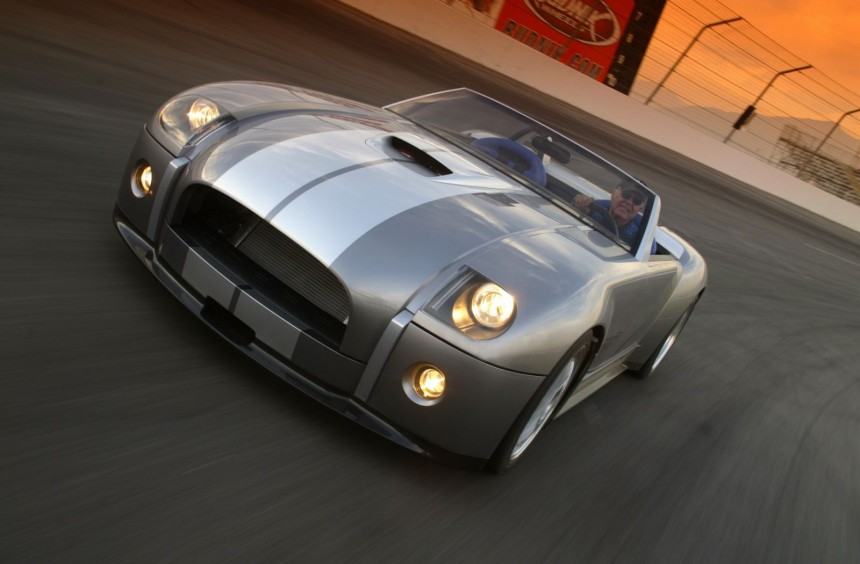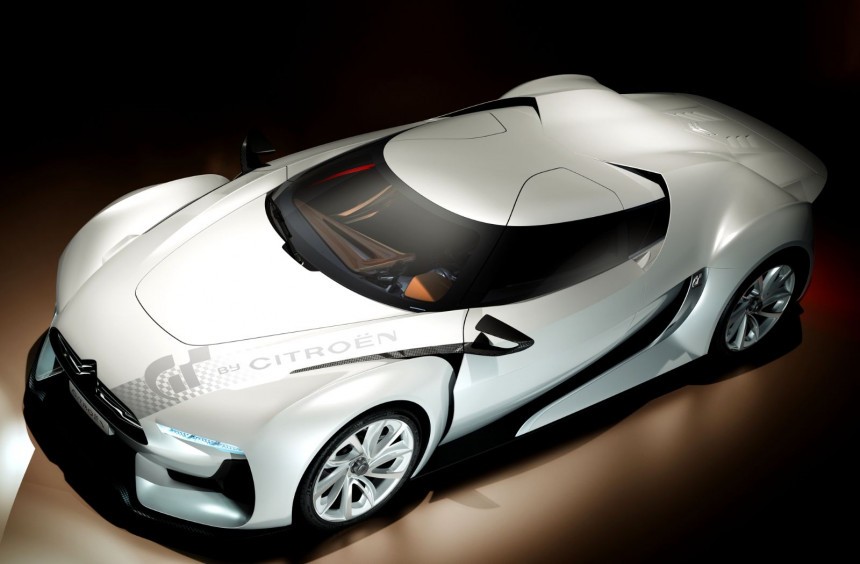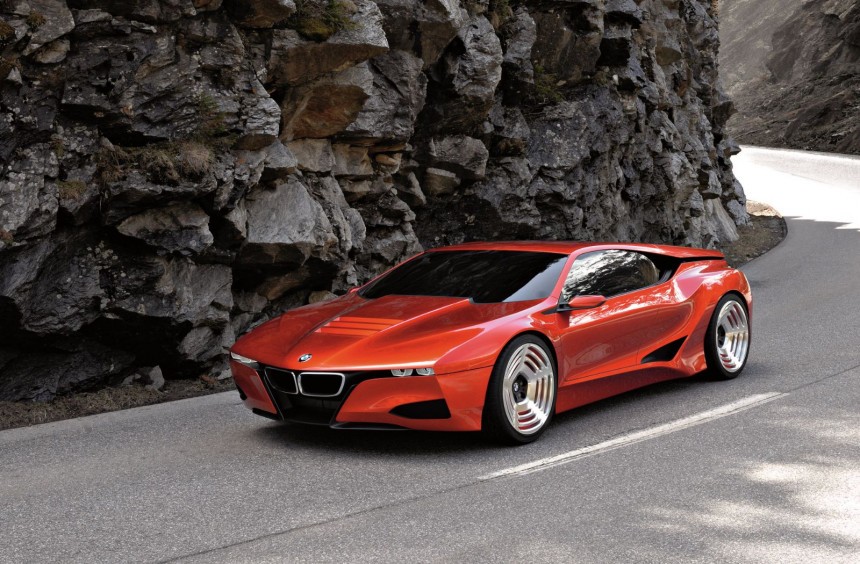A series of incredible supercars that are now automotive legends were produced during the 2000s. However, the list could've been bigger and more memorable if these fascinating concepts had made it into production.
The term "supercar" became popular during the 1960s when the American press and gearhead community applied it to what we call muscle cars today.
However, the Lamborghini Miura and similar high-performance sports cars from the 1970s and 1980s gave the term a more suitable meaning.
Not to take anything away from muscle cars (which are some of my favorite vehicles), but a kevlar-carbon bodied, twin-turbo V8-powered masterpiece like the Ferrari F40 is unquestionably more super than a Chevy Chevelle SS 454 (even with an LS6).
The supercar boom occurred in the 1980s and 1990s, so when the new millennium came, manufacturers had to step up their game to exceed the epicness of icons like the McLaren F1, Ferrari F40 and F50, Lamborghini Diablo, Dodge Viper or Bugatti EB 110.
And step up they did, unleashing another long list of exciting supercars such as the Bugatti Veyron, Enzo Ferrari, Lamborghini Murcielago, and Porsche Carrera GT.
But, apart from these legendary production models, carmakers also unveiled a series of fascinating concepts during the 2000s.
Some explored novel designs and were way too futuristic to make it into production, but the following five concepts flawlessly combined futurism with functionality and should've been unleashed on public roads.
Few can disagree that the MC12 is Maserati's greatest production sports car. Introduced in 2004 as the road-going version required to homologate the MC12 GT1 for racing, it was heavily based on the 2002 Enzo Ferrari.
While it was unquestionably special, the MC12 could've looked even better if it wasn't primarily developed for racing.
A few months after the new Maserati supercar was introduced, coachbuilders Pininfarina unveiled the stunning Birdcage 75th, a mid-engine concept developed in collaboration with Maserati and Motorola for the company's 75th anniversary.
Based on the MC12 GT race car chassis, its gorgeous body with a huge teardrop-shaped canopy instead of conventional doors was designed by Ken Okuyama, who also penned the Enzo's styling.
It was powered by the road-going MC12's 700-hp V12 linked to a six-speed automated manual transmission and came with a futuristic cabin that featured a steering-wheel-mounted LED infotainment screen built by Motorola.
The Birdcage 75th was nothing more than a celebratory concept, and Maserati fans had to settle for the MC12. Still, the concept was so beautiful and fascinating that it deserved to make it into production.
Prior to the 2000s, the Chrysler Corporation was responsible for the legendary Dodge Viper, but the Chrysler brand had never attempted to develop a modern supercar.
That changed a few years after the Daimler-Behnz AG merger when a secret project was kicked off.
At the North American International Auto Show in 2004, the result of that secret project was presented to the public in the shape of the jaw-dropping ME Four-Twelve.
Built around a carbon-fiber monocoque chassis with F1-style pushrod suspension, the supercar featured a mid-mounted, quad-turbo V12.
Developed by AMG on the backbones of Merc's potent M120, the powerhouse was rated at 850 hp, enabling the 2,880-pound (1,310 kg) Four-Twelve to sprint to 60 mph (97 kph) from a standstill in 2.9 seconds.
Breathtakingly beautiful and ridiculously fast, the supercar was developed to comply with all Federal regulations, so it was much more than just a concept.
The plan was to start a limited production run, but Chrysler's European partners eventually stepped in and convinced the company to pull the plug on the entire project.
During the 2000s, Ford went on a terrific retro-inspired design spree. The fifth-gen Mustang abandoned the boring styling of its predecessors and now looked more like the first-gen than any other iteration. Moreover, the Ford GT40 made a comeback as a modern supercar dubbed GT.
The Blue Oval didn't stop there, and in 2004, it revealed a modern, retro-inspired Shelby Cobra show car.
Designed by the company's Advanced Product Creation team with valuable input from Carroll Shelby himself, the modern Cobra was minimalist yet gorgeous - just like the original sports car.
However, unlike the original Cobra, the 2004 concept abandoned the V8 in favor of an experimental Modular V10 that made 645 naturally aspirated horses.
Apart from the engine and body, which were built from scratch, the concept featured a modified version of the GT's chassis adapted for the classic front-engine layout.
Ford continued to tease fans with another modern Shelby concept called GR-1 a year later. Unfortunately, neither joined the fifth-generation Mustang or GT supercar on the new retro-inspired production cars list.
The French manufacturer Citroen is renowned for near-flawless suspension systems, among other things, but until 2008, building supercars was not one of them.
The model that changed that was the GT, a stunning all-whee-drive, mid-engine, two-seater initially developed for Polyphony Digital's Gran Turismo racing simulator franchise.
Designed by Citroen's Takumi Yamamoto, a close friend of Polyphony CEO Kazunori Yamauchi, the GT wasn't just a virtual supercar.
A real-life, fully functional model financed by the video game developer debuted at the 2008 Paris Motor Show.
However, unlike its battery-electric digital counterpart, the concept received a 646-hp version of the Ford GT's Modular V8, which made it even more impressive.
The supercar caused quite a stir, and Citroen announced plans for a six-unit production run in 2009. Unfortunately, those plans were abandoned a year later due to high development costs.
Designed by Giorgetto Giugiaro and inspired by Paul Bracq's 1972 Turbo concept, the M1 became BMW's first mid-engine production car and M-badged model.
While it never lived up to expectations due to multiple development issues caused by the collaboration with Lamborghini, the M1 managed to become an icon.
In 2008, thirty years after it began producing the M1, the Bavarians decided to bring it back in the form of a concept.
Called M1 Hommage, the show car took the popular 1970s design of the original model to a whole new level by reinterpreting the cues that everyone loved and mixing them with modern styling.
Many enthusiasts have called it the most beautiful car that the company has ever produced, but sadly, BMW never seriously considered a production run.
The M1 Hommage didn't even feature an interior or a powertrain, which leaves room for imagination. If the Germans had decided to turn it into a production model, the 500-hp V10 that powered the E60/E61 M5 could've sat behind the modern M1's passenger compartment.
Ultimately, the concept helped inspire BMW's second production mid-engine sports car, the i8. But, with sensibly watered-down styling and a hybrid powertrain centered around an inline-three, it was not quite the M1 success that fans were hoping for.
However, the Lamborghini Miura and similar high-performance sports cars from the 1970s and 1980s gave the term a more suitable meaning.
Not to take anything away from muscle cars (which are some of my favorite vehicles), but a kevlar-carbon bodied, twin-turbo V8-powered masterpiece like the Ferrari F40 is unquestionably more super than a Chevy Chevelle SS 454 (even with an LS6).
The supercar boom occurred in the 1980s and 1990s, so when the new millennium came, manufacturers had to step up their game to exceed the epicness of icons like the McLaren F1, Ferrari F40 and F50, Lamborghini Diablo, Dodge Viper or Bugatti EB 110.
And step up they did, unleashing another long list of exciting supercars such as the Bugatti Veyron, Enzo Ferrari, Lamborghini Murcielago, and Porsche Carrera GT.
But, apart from these legendary production models, carmakers also unveiled a series of fascinating concepts during the 2000s.
Some explored novel designs and were way too futuristic to make it into production, but the following five concepts flawlessly combined futurism with functionality and should've been unleashed on public roads.
Maserati Birdcage 75th
While it was unquestionably special, the MC12 could've looked even better if it wasn't primarily developed for racing.
A few months after the new Maserati supercar was introduced, coachbuilders Pininfarina unveiled the stunning Birdcage 75th, a mid-engine concept developed in collaboration with Maserati and Motorola for the company's 75th anniversary.
Based on the MC12 GT race car chassis, its gorgeous body with a huge teardrop-shaped canopy instead of conventional doors was designed by Ken Okuyama, who also penned the Enzo's styling.
It was powered by the road-going MC12's 700-hp V12 linked to a six-speed automated manual transmission and came with a futuristic cabin that featured a steering-wheel-mounted LED infotainment screen built by Motorola.
The Birdcage 75th was nothing more than a celebratory concept, and Maserati fans had to settle for the MC12. Still, the concept was so beautiful and fascinating that it deserved to make it into production.
Chrysler ME Four-Twelve
That changed a few years after the Daimler-Behnz AG merger when a secret project was kicked off.
At the North American International Auto Show in 2004, the result of that secret project was presented to the public in the shape of the jaw-dropping ME Four-Twelve.
Built around a carbon-fiber monocoque chassis with F1-style pushrod suspension, the supercar featured a mid-mounted, quad-turbo V12.
Developed by AMG on the backbones of Merc's potent M120, the powerhouse was rated at 850 hp, enabling the 2,880-pound (1,310 kg) Four-Twelve to sprint to 60 mph (97 kph) from a standstill in 2.9 seconds.
Breathtakingly beautiful and ridiculously fast, the supercar was developed to comply with all Federal regulations, so it was much more than just a concept.
The plan was to start a limited production run, but Chrysler's European partners eventually stepped in and convinced the company to pull the plug on the entire project.
Ford Shelby Cobra Concept
The Blue Oval didn't stop there, and in 2004, it revealed a modern, retro-inspired Shelby Cobra show car.
Designed by the company's Advanced Product Creation team with valuable input from Carroll Shelby himself, the modern Cobra was minimalist yet gorgeous - just like the original sports car.
However, unlike the original Cobra, the 2004 concept abandoned the V8 in favor of an experimental Modular V10 that made 645 naturally aspirated horses.
Apart from the engine and body, which were built from scratch, the concept featured a modified version of the GT's chassis adapted for the classic front-engine layout.
Ford continued to tease fans with another modern Shelby concept called GR-1 a year later. Unfortunately, neither joined the fifth-generation Mustang or GT supercar on the new retro-inspired production cars list.
GT by Citroen
The model that changed that was the GT, a stunning all-whee-drive, mid-engine, two-seater initially developed for Polyphony Digital's Gran Turismo racing simulator franchise.
Designed by Citroen's Takumi Yamamoto, a close friend of Polyphony CEO Kazunori Yamauchi, the GT wasn't just a virtual supercar.
A real-life, fully functional model financed by the video game developer debuted at the 2008 Paris Motor Show.
However, unlike its battery-electric digital counterpart, the concept received a 646-hp version of the Ford GT's Modular V8, which made it even more impressive.
The supercar caused quite a stir, and Citroen announced plans for a six-unit production run in 2009. Unfortunately, those plans were abandoned a year later due to high development costs.
BMW M1 Hommage
While it never lived up to expectations due to multiple development issues caused by the collaboration with Lamborghini, the M1 managed to become an icon.
In 2008, thirty years after it began producing the M1, the Bavarians decided to bring it back in the form of a concept.
Called M1 Hommage, the show car took the popular 1970s design of the original model to a whole new level by reinterpreting the cues that everyone loved and mixing them with modern styling.
Many enthusiasts have called it the most beautiful car that the company has ever produced, but sadly, BMW never seriously considered a production run.
The M1 Hommage didn't even feature an interior or a powertrain, which leaves room for imagination. If the Germans had decided to turn it into a production model, the 500-hp V10 that powered the E60/E61 M5 could've sat behind the modern M1's passenger compartment.
Ultimately, the concept helped inspire BMW's second production mid-engine sports car, the i8. But, with sensibly watered-down styling and a hybrid powertrain centered around an inline-three, it was not quite the M1 success that fans were hoping for.
